From a Reach to Recovery conference in 2012
Growing a Service:
expanding connections in a group for women with metastatic breast cancer.
A very brief background
The group is based on those started by Dr David Spiegel, at Stanford university in America, using the model he called supportive/expressive group therapy. He had found when he frst evaluated these groups for women with advanced breast cancer that those who attended appeared to live longer. Randomised control trials that were then run in various centres across the world, to see if this fnding could be replicated. Dr David Kissane in Melbourne was involved in the setting up of these in Australia.
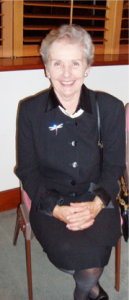 Dr Bron Beacham, a psychiatrist and psychotherapist with a long standing interest in the needs of women with metastatic disease, was going to run one of the groups in that trial, and she asked Mary to join her. However funding for the trial was only made available in Victoria, but as they had done all the preparation they decided to go ahead and run the group as a service for women in Queensland.
Dr Bron Beacham, a psychiatrist and psychotherapist with a long standing interest in the needs of women with metastatic disease, was going to run one of the groups in that trial, and she asked Mary to join her. However funding for the trial was only made available in Victoria, but as they had done all the preparation they decided to go ahead and run the group as a service for women in Queensland.
The initial fnding of longer survival has never been replicated, but what was found, and what we have found too in our evaluation of our group, is that depression goes down, and vitality goes up for women in the group, and their quality of life is enhanced.
So the group started in 1999 as a tiny service – 2 women in a small room in aninner city suburb in Brisbane, with a bold and brave idea. Bron retired at the en
of 2003, and in 2004 I joined Mary. (All 3 of us are individual and group psychotherapists.) In 2013 it is still a tiny service, now with 5 people; Mary and I, an admin person, a research person, and an IT person, all either part-time or very part-time – between us we possibly would fll one full time position – but now reaching out from the same small room to women across the large and decentralised state of Queensland, and across the whole country. And the story of how this evolved, and the value and richness of the connections that have been formed along the way, and how these connections have helped the women in the group, is what I would like to tell you about. Because I think it is a good story, and a good story is worth telling.
So…
In 2001, having received requests from women
outside Brisbane to join the group, and with a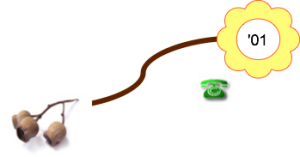
donation from the Country Women’s Association,
Bron and Mary bought a teleconference unit.
Much thought went into what to use, with
computers and email and Skype all becoming more available, but they decided that
everyone was comfortable and familiar with a landline, and it was more likely that women in rural and remote areas would have a reliable phone, and we have used the telephone ever since. All calls from landlines in the country are free, funded by the service. The use of the phone has linked women all over the state – like one woman who lived on a property whose front door was a half hour’s drive from her gate, and who drove 3 hours to the nearest centre for any tests or treatment, and another who lives on a dolomite mine 2 hours west of the nearest town, and is regularly cut off in foods, to those in central Brisbane who are unable to come into the rooms because they are so encumbered by side effects and the debilitating effect of the later stages of the illness that they are unable to leave their homes. Women have rung in while on holiday, they have rung in from the phone boxes in public hospitals, with their chemo infusion drip on a wheeled hanger next to them, and from their hospital beds, shortly before their death. As one woman said, the phone is a lifeline.
Then ….
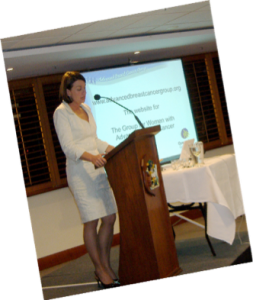 In 2005 the
In 2005 the
then deputy state premier, Anna Bligh, launched launched our web-site from the parliamentary annexe of the state parliament. The web site has since had several updates, and in October last year we received a request from the state library of Queensland asking for our permission to upload our website to the online archive for the National Library of Australia. They select sites that they consider are of signifcance and that have long-term research value for the nation, and these are made available in perpetuity. We were
pleased and proud to be asked, and gave our permission promptly.
Then….
When we launched the site we had a section that was an Internet forum for women with advanced breast cancer. It was not a roaring success. But very soon afterwards we were approached by a woman in Victoria who had metastatic cancer and who worked in IT, who said she had just started a forum too, and it seemed silly to compete, so were we interested in joining forces? Which we did.
 She has since died, but the forum fourishes and remembers her, with close to 1700 members, moderated by a dedicated volunteer in Sydney. Our service funds the forum, and along with an organisation in WA, on the other side of the continent, works as the management team, as well as a source of assistance and support for the volunteer. It is a lively and warm online community. They support one another, worry about one another, give one another the beneft of their own experiences, and laugh together. They organise face to face get together’s in different states, and if someone is going on a holiday in Australia, will arrange to meet with others along the way.
She has since died, but the forum fourishes and remembers her, with close to 1700 members, moderated by a dedicated volunteer in Sydney. Our service funds the forum, and along with an organisation in WA, on the other side of the continent, works as the management team, as well as a source of assistance and support for the volunteer. It is a lively and warm online community. They support one another, worry about one another, give one another the beneft of their own experiences, and laugh together. They organise face to face get together’s in different states, and if someone is going on a holiday in Australia, will arrange to meet with others along the way.
And….
In 2008 we launched our first
DVD – “You’re not Alone”. We
had discussed the making of
the DVD with the women in
the group over some time,
asking them what information
they wanted to pass on to
other women, what they thought would be helpful to know when given this diagnosis. We worked with a young woman who was a recent graduate of the Griffth university flm school, who, along with a sound recordist, interviewed 3 women in the group about their experience of living with this illness. The women in the DVD don’t pretend to be extraordinary or particularly brave – they simply tell their stories, but their stories have now gone out to women
across the nation, and across the world. It is, along with the other 2 we have made, a free resource.
The DVD was launched by Quentin Bryce, who was then Governor of Queensland, but had already been 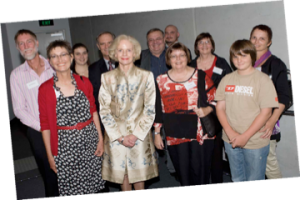 asked to be Governor General of Australia. She gave a beautiful speech, which I would like read to you.
asked to be Governor General of Australia. She gave a beautiful speech, which I would like read to you.
As each of them shares her own insights, we
glimpse a journey that’s uncertain, arduous, painful, shadowed. when it will end.
No-one can tell them
Yet their walk along it is honest and brave, lit up by unquenchable hope.
They are learning and accepting, talking, sharing, searching in themselves and those around them.
They’ve owned their disease in empowering ways; they admit its ferocity; they are undaunted by its sharp edge.
They are glowing examples of how to live well in the face of huge adversity.
What moves me most about them is how they fnd themselves caring for their families and friends: not only coping with their own debilitation, but cheering and encouraging their loved ones; allowing them to come to terms with grief and loss.
They speak to me of women’s incredible capacity for life: how we sustain and nurture it in ourselves, our children, our communities.
How we cherish it, revel in it, even as our grasp on it seems to fade.
They also speak of the power of women’s friendships and networks: in building knowledge, engaging support, providing information, counsel, help.
Over a generation, I’ve watched the response of women to breast cancer:
individually and collectively; in small communities and across the nation.
I’ve marvelled at the fortitude and energy they’ve drawn upon; their rigorous enquiry and ceaseless advocacy; the way they’ve made us, as a society, conscious, informed, protective, generous.
They are true leaders and pioneers in women’s health: the fnest model for how we ought to understand and nourish our shared humanity.
Listening to the hearts of Fran, Kay and Pam, we draw close to the centre of that humanity, the fame that burns in each of us, made brighter by the surrounding dark.
For Pam, the journey’s ended; yet her words remain to lift and bless her comrades as they now go on, knowing they are not alone.
Then….
At the end of 2008 or early 2009 we were given a donation from a belly dancing troupe, who had just had one of their own diagnosed with cancer. Each year they give their takings from their annual gala to a charity of their choice, and that year, we were their choice. We asked the women in the group what they would like us to do with this money, and one woman, who lived in Mackay, suggested that we organise something where they could meet one another. They felt that many of them had not met, and had not met us, and it would be good if we could do that. So we did.
We paid the costs for the women to
come to Brisbane, for their
accommodation, and we invited
them to bring partners, adult family
members or friends, people who they
felt were important to them in this
journey, for whom we also paid. We organised a day event, with a large slice of time for morning tea and lunch, to meet one another and talk, as well as 2 more formal sessions with professionals in the feld of oncology. We fnished the day with an art therapy session – we
thought something creative and enjoyable would be a good way to bring us all together at the end of the day, and provide a gentle way to end.
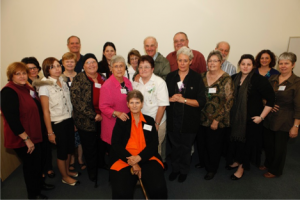 It was extremely successful, the women enjoyed meeting one another face to face, as well as meeting husbands, children, and friends, putting faces to the voices and names in the group. These Get Together’s have become annual events, with 2 last year, and 2 planned for this year, and we have kept the same format. The
It was extremely successful, the women enjoyed meeting one another face to face, as well as meeting husbands, children, and friends, putting faces to the voices and names in the group. These Get Together’s have become annual events, with 2 last year, and 2 planned for this year, and we have kept the same format. The
opportunity to have time to speak with and ask questions of a medical oncologist has been very much appreciated by both the women and their families, and has remained an important part of the day.
And then …..
 Fran, one of the women in the frst DVD, tells us that her doctor said to her, “this is your own journey, no-one can be in your shoes, but we will walk beside you.” Fran’s husband, Peter used to say, particularly when she was becoming less well, that it would have been
Fran, one of the women in the frst DVD, tells us that her doctor said to her, “this is your own journey, no-one can be in your shoes, but we will walk beside you.” Fran’s husband, Peter used to say, particularly when she was becoming less well, that it would have been
good to speak to someone who had experienced this, to know what to expect, to just talk with them. After Fran’s death he kept in touch with us, and after much planning and discussion he came to the next Get Together,
and was flmed in conversation with Tom, Mary’s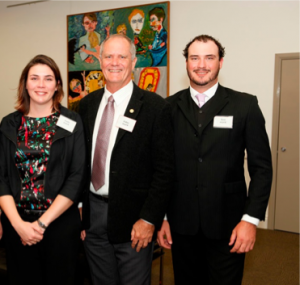
husband, talking about his experience. He
talks, simply and clearly and movingly about their
experience together, but also about his side of
things, what he had to do to best live this life with
her in a way that worked for both of them, and
how he had managed in the time after her death.
He is an engineer, a very practical man, and he
had to fnd other aspects of himself to help her, and be with her as she worked her way through her life with this illness. And so we produced our second DVD, called Walking Beside Her, also launched by the Premier, Anna Bligh.
On that same day we also flmed a Q&A with a radiation oncologist, and our tiny service has now sent out over 10,000 of these DVD’s to women and their families.
We found that we still had some donated money left over. Much earlier in the life of the service, before my time, there had been a collaborative event with a writer, resulting in a book being published of
short writings and poetry. We wondered again about doing something that was a creative activity, that gave the women something, that connected them with one another, but also with something in themselves they may have lost touch with in the ongoing and all- consuming dealing with this intrusive and sometimes quite violent illness. We spoke with Bernard, who has, among other things, written a song for us, and over several cups of tea and many ginger biscuits, we developed the Memory Box Project.
This is open to the women in the group, whereby , in collaboration with Bernard, they can write, or speak into small recorders, or take video clips – whatever they wish – to collect memories. We thought that women might wish to do different things – in the past women have prepared boxes of small writings or gifts for their as yet unborn grandchildren, or letters to be opened on signifcant events , such as birthdays or weddings. We thought some might wish to create something for their families that they could leave. We also thought that some women may see this as a way of re- collecting their own memories, aspects of their lives that have been important to them, from childhood, or from work and careers, or from their lives pre-cancer.
Mary and I thought we would buy some robust cardboard boxes, but Bernard was after better things and wanted timber boxes. He made several enquiries in several places, but one of the women in the group contacted the Bribie Island Woodies near her home – a group of mostly retired men, who have a woodwork shed where they meet and teach and learn and make fne items, and they agreed to donate handmade timber boxes for us. They are beautiful – beautiful wood, beautiful work, and made
with generosity of spirit.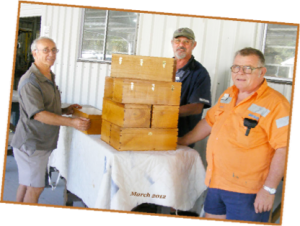
And here they are, with our lovely boxes! So….
for the past year, we have
had this project. We meet
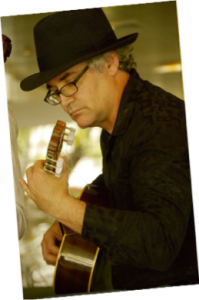 once a month with Bernard, who runs the hour, and takes notes. The women talk, and he transforms their memories into stories, which he sends back to them as written document. He has on
once a month with Bernard, who runs the hour, and takes notes. The women talk, and he transforms their memories into stories, which he sends back to them as written document. He has on
a couple of occasions had these illustrated by his father, a fne artist with pen and ink, and intends to have some of the stories bound into small books. One of the women writes children’s stories for her young grandchildren, and has been asked to write one for a friend’s grand-daughter. Not all of the women actually joined, although everyone received a box which they will be able to keep and pass down – a memory in itself. However everyone in the group has beneftted in several ways – the recounting of memories has prompted others to remember and speak about their experiences, and the connections in the group have become warmer as a result.
And in October last year, Breast Cancer Awareness Month, Bernard created a performance for us, with 2 actors, and musicians, which he organised to be put on at the State Library Café. They served an elegant morning tea on tables laid with white cloths, and the women and their guests attended and were hosted and entertained. As one of the women said – “I can’t believe this is all for us.” Which we feel is a fne antidote for the experience that our women often talk about, of not having a place where they are welcomed, where they can be, because they are the face of what every woman with primary cancer is fearful of.
Before I came I sent a copy of the text of this to the women in the group for their thoughts, and this is what they said:
“I wondered if you could elaborate on your and Mary’s role as facilitators during our Tuesday group. I think the group works very well the way you and Mary allow us to direct the conversation but you are always there in the background to pose questions where relevant, offer support and information. It is also very important to me to know that I can email or phone you both for support.” – Brighid
“ It reinforces for me just how fortunate I am to be part of such a wonderful service and hopefully it will be the inspiration for similar services to be established in other countries.” – Margaret
“Thanks for presenting our group in this way.” – Carol
“There are no answers as to why my life has presented me with such challenges, but I have learnt to seek and appreciate the positives.
I feel we are truly Blessed to have such a special bond and the support for one another in our
group, I am so grateful to you and Mary for being there for us” – Maria Finally…..
All the women who come to our group come with the knowledge that they are going to die from this disease. They come because they want to talk to other women who are also walking this path. They want to know how other women manage, how they manage the treatment and the side-effects, how they manage the fear and the uncertainty, how they talk with their families. They gain courage and inspiration from one another in their capacity to do not necessarily new, astonishing things, but more importantly, to continue to do the most ordinary and simple ones, to live ordinary lives and to care for their families, in the face of this illness .
We believe that the beneft they gain from making connections with others, with others who understand, who will listen to what they have to say and who don’t tell them to “just be positive and you will beat this”, is nourishing and sustaining, and helps them to face the fact of their death with less fear, with greater calm, with the knowledge that they are remembered, and with the comfort that they are not alone. We each walk through life towards death in our own way. What we try to offer in this group is the opportunity for each woman to think about what her life and her death is for her, what she wants her particular walk to look like, and how to accomplish that. The women in our group are brave and feisty, who in the midst of this illness that leads to what is still a certain death, show that by connecting with others in a variety of ways, life can be embraced and relished, and that new, creative and growing experiences can come.
Hand and Foot Syndrome #2
To help manage Hand and Foot syndrome I wear white cotton gloves available from chemists all the time and socks at night in bed after applying the creams. For more suggestions, click here

